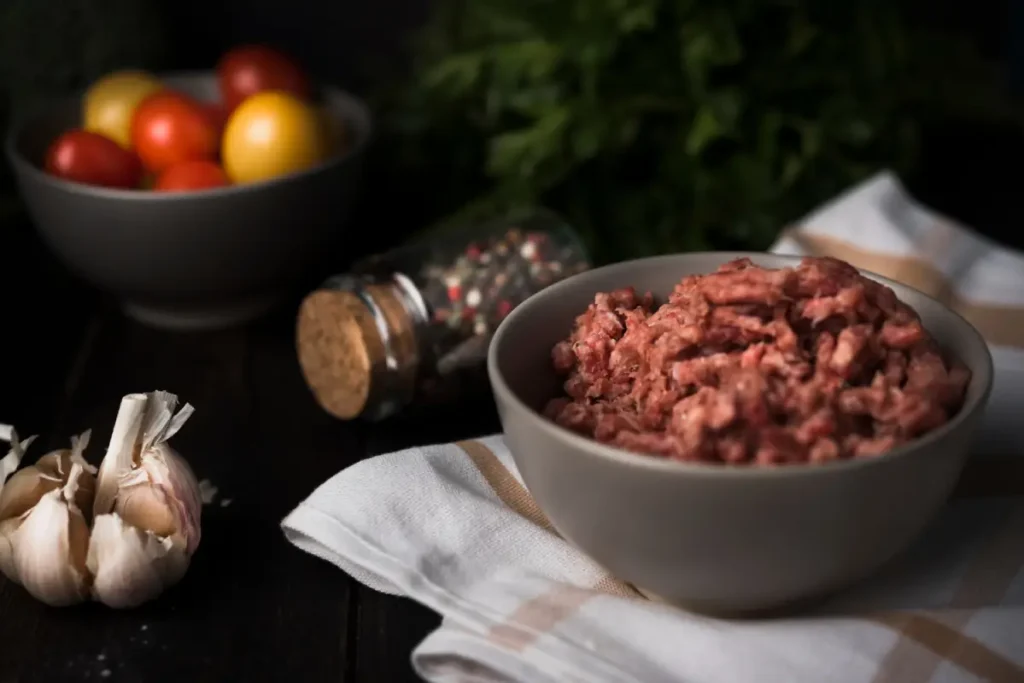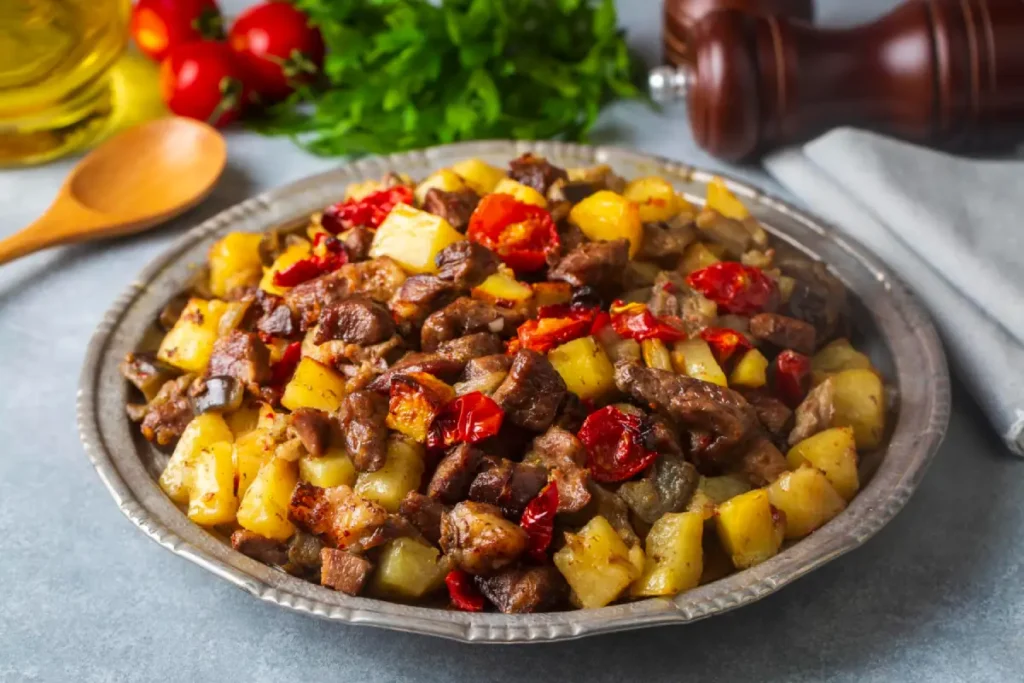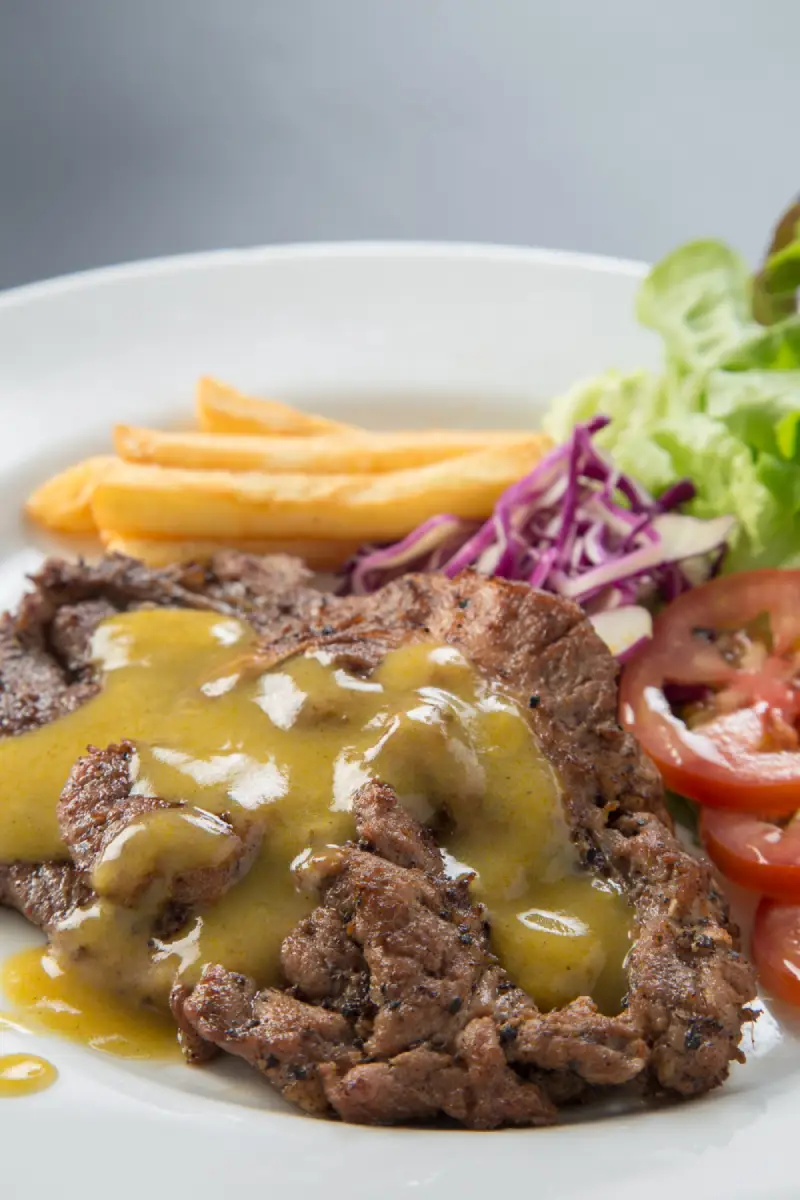Embarking on a culinary journey to elevate the humble corned beef with a symphony of spices, this article delves into the art of crafting the perfect easy corned beef seasoning. From the aromatic allure of key ingredients to the satisfaction of blending your own spices, we’ll explore every facet of creating a seasoning that transforms the ordinary into the extraordinary.
Introduction
Corned beef, a staple that has traversed continents and centuries, finds its essence in the blend of spices that season it. The journey from a simple cut of beef to a flavorful delicacy is paved with the choice of seasoning. We’ll start with the key ingredients that make up the cornerstone of corned beef seasoning, venture into the realms of homemade versus store-bought blends, and guide you through a step-by-step process to crafting your own. Along the way, we’ll touch on health considerations, perfect pairings, and even how to adapt these seasonings for vegetarian cuisines. With expert tips and a peek into the science behind the flavors, you’re set to embark on a culinary adventure that promises to be as rewarding as it is delicious.
Key Ingredients for Corned Beef Seasoning
The symphony of flavors in corned beef seasoning begins with a carefully selected ensemble of spices. Each ingredient plays a pivotal role, contributing its unique notes to the overall harmony.
Black Peppercorns:
The quintessential spice, offering a spicy kick that awakens the palate. Its boldness lays the foundation for the seasoning blend.
Mustard Seeds:
These tiny seeds pack a punch of heat and complexity, adding depth and a tangy zest that complements the beef beautifully.
Coriander Seeds:
With their citrus undertones, coriander seeds bring a light, bright flavor that balances.
Red Pepper Flakes (optional):
For those who favor a bit of fire, red pepper flakes introduce a warm heat .
Cloves and Cardamom Pods:
These spices add a sweet, aromatic warmth, infusing the seasoning with layers of flavor that are both.
Cinnamon Stick:
A whisper of cinnamon adds a gentle warmth, a subtle nod to the spice routes that influenced .
Dried Bay Leaves:
Their mild herbal flavor rounds out the seasoning, grounding it with an earthy base that complements the robustness of the beef.
This blend, while traditional, is just the beginning.

Step-by-Step Guide to Making Seasoning
Creating your own corned beef seasoning is a simple yet gratifying process. Here’s how to bring your blend to life:
Toast the Spices:
Begin by toasting the black peppercorns, mustard seeds, coriander seeds, and, if you’re using them, red pepper flakes, cloves, and cardamom pods in a dry pan over medium heat. This step releases the oils in the spices, amplifying their flavors and aromas.
Grind the Blend:
Once toasted, transfer the spices to a grinder, adding the broken pieces of cinnamon stick and crumbled bay leaves. Grind to your preferred consistency, whether coarse for a rustic feel or fine for a more integrated flavor.
Store Properly:
Transfer your freshly made seasoning to an airtight container and store it in a cool, dry place. This preserves its potency and ensures your corned beef seasoning is ready whenever inspiration strikes.
For those looking to expand their culinary expertise further, consider exploring The Ultimate Guide to Homemade Biscuit Recipes, which offers insights into creating comforting, homemade delights that pair wonderfully with corned beef. Additionally, our guide on Essential Spaghetti Seasoning can inspire you to bring a touch of Italian flair to your kitchen, showcasing the versatility of spices in transforming dishes from around the globe.
Perfecting Your Corned Beef Recipe
Once you’ve mastered the art of making your own corned beef seasoning, the next step is to apply it in a way that fully showcases its rich flavors. Perfecting your corned beef recipe involves more than just the seasoning; it’s about understanding the meat and how its texture and flavor can be enhanced through cooking.
Select the Right Cut:
Opt for a brisket cut, which has the perfect balance of fat to keep the meat moist during the long cooking process.
Season Generously:
Rub the seasoning blend all over the meat, ensuring it’s evenly coated. For deeper flavor, you can let the seasoned meat marinate in the refrigerator overnight.
Cook Slowly:
Corned beef is best cooked low and slow, whether you’re using a slow cooker, an oven, or a stovetop. This gentle cooking method allows the meat to become tender and absorb all the flavors of the seasoning.
Let it Rest:
After cooking, let the corned beef rest before slicing. This allows the juices to redistribute, ensuring the meat is moist and flavorful when served.
Corned Beef Seasoning Variations
While the traditional seasoning blend is a great starting point, don’t be afraid to experiment with variations to find the flavor profile that best suits your palate. Here are a few ideas to inspire your next batch:
Spicy Twist:
Add more red pepper flakes or incorporate a bit of cayenne pepper for a seasoning that packs a punch.
Herbal Notes:
Mix in dried thyme or rosemary for a seasoning blend with a fragrant, herbal aroma.
Sweet and Spicy:
Combine the warmth of the traditional spices with a hint of brown sugar or maple syrup to create a sweet-and-spicy version that caramelizes beautifully when cooked.
Health Considerations in Seasoning
When crafting your corned beef seasoning, it’s also important to consider health aspects. Many store-bought seasonings contain high levels of sodium and preservatives, which can be a concern for those monitoring their salt intake or with dietary restrictions. By making your own blend, you can control the amount of salt used or opt for salt-free variations, making your corned beef healthier without compromising on flavor.
Seasonal and Festive Uses
Corned beef is not just for St. Patrick’s Day; its versatility makes it a welcome addition to many seasonal and festive tables. In the fall, pair it with roasted root vegetables for a hearty meal. During the winter holidays, a well-seasoned corned beef can be the centerpiece of a festive dinner, offering a comforting and flavorful alternative to traditional roasts.
Expert Tips for Best Results
Slice Against the Grain:
For the tenderest texture, slice your corned beef against the grain. This cuts through the muscle fibers, making the meat easier to chew.
Experiment with Cooking Liquids:
Instead of water, try cooking your corned beef in beer, cider, or a mixture of broth and wine for added depth of flavor.
Use Fresh Spices:
For the most vibrant flavors, make sure your spices are fresh. Spices lose their potency over time, so using fresh ones will ensure your seasoning blend is as flavorful as possible.
DIY Seasoning Kits
For those who love the idea of homemade corned beef seasoning but are pressed for time, DIY seasoning kits can be a game-changer. Here’s how to put together your own:
Select Your Spices:
Based on your favorite corned beef seasoning recipe, gather all the necessary spices.
Measure and Package:
Measure out the exact amounts needed for one batch of seasoning and package them in small, labeled bags or containers.
Include Instructions:
Write out a simple set of instructions on how to toast and grind the spices, and attach it to your kit.
Personalize:
Add a personal touch by including a note or suggestions for using the seasoning, such as cooking tips or recipe ideas.
These kits not only make the seasoning process more convenient but also serve as thoughtful, personalized gifts for any occasion.

Preserving and Storing Spices
To ensure your corned beef seasoning retains its potency and flavor, proper storage is key. Spices should be kept in a cool, dark place away from direct sunlight or heat, which can degrade their quality. Airtight containers are essential to prevent moisture from getting in, which can lead to mold or clumping. Glass jars with tight-fitting lids or metal tins are excellent choices.
Innovative Cooking Techniques
Beyond the traditional boiling or slow-cooking methods, there are innovative techniques to cook corned beef that can enhance its flavor and texture:
Sous Vide:
Cooking corned beef sous vide ensures it’s perfectly tender and allows for precise control over the cooking temperature. Season the meat with your homemade blend, vacuum-seal it in a bag, and cook it in a water bath at a low temperature for an extended period.
Smoking:
For a smoky twist, try seasoning your corned beef and then smoking it. This method infuses the meat with a rich, smoky flavor that’s irresistible.
Braising:
Braising corned beef in a flavorful liquid, such as beer or broth mixed with your seasoning, results in a moist, tender, and flavorful dish. This method allows the meat to slowly absorb all the aromatic spices.
The Science Behind the Flavor
Understanding the science behind flavor can elevate your corned beef seasoning to new heights. Spices contain essential oils and compounds that are released through toasting and grinding, which is why these steps are crucial in seasoning preparation. The slow cooking of corned beef allows for the diffusion of these flavors throughout the meat, resulting in a complex and rich taste profile. Additionally, the interaction between the spices and the meat’s proteins during cooking creates new flavor compounds, enhancing the overall taste of the dish.
Worldwide Influences on Corned Beef
Corned beef is enjoyed in various forms around the globe, each influenced by local flavors and traditions. From the spicy, cured versions in the Caribbean to the savory, brined briskets in Ireland, exploring these international variations can provide inspiration for your own seasoning blends. Incorporating spices or ingredients from these global recipes can add an exciting twist to your traditional corned beef dish.
Sustainable and Ethical Sourcing
In crafting your corned beef seasoning, consider the importance of sustainable and ethical sourcing of spices. Opt for spices from brands that prioritize fair trade practices and sustainable farming, which not only ensures the quality of your ingredients but also supports ethical practices in the spice industry.
Corned Beef Seasoning in Vegetarian Cuisines
Corned beef seasoning isn’t just for meat; it can also add depth and flavor to vegetarian dishes. Try using the seasoning blend on roasted vegetables, in stews, or to flavor plant-based proteins, offering a way to enjoy the traditional taste of corned beef in a vegetarian or vegan format.
Conclusion
Mastering the art of corned beef seasoning opens up a world of culinary possibilities, from crafting the perfect blend to exploring innovative cooking methods. By understanding the key ingredients, experimenting with variations, and considering health and sustainability, you can elevate your corned beef dishes to new heights. Whether you’re celebrating a holiday or simply enjoying a family meal, the right seasoning can transform your corned beef into a memorable and delicious experience.
FAQs:
How do you make canned corned beef taste better?
What are the secrets to cooking corned beef?
How do you make corned beef not taste like corned beef?
What is the best way to eat corned beef?

Recipes:
Classic Homemade Corned Beef Seasoning Recipe
Elevate your corned beef with this simple yet flavorful homemade seasoning blend. Perfect for St. Patrick’s Day or any day you crave this comfort food classic.
Ingredients:
- 1 tablespoon black peppercorns
- 1 tablespoon mustard seeds
- 2 teaspoons coriander seeds
- 1 teaspoon crushed red pepper flakes (optional, adjust for heat preference)
- 4 whole cloves
- 2 cardamom pods
- 1 cinnamon stick, broken into small pieces
- 4 dried bay leaves, crumbled
- ½ teaspoon ground ginger
Instructions:
- Toast the Spices: In a dry skillet over medium heat, add the black peppercorns, mustard seeds, coriander seeds, crushed red pepper flakes (if using), cloves, cardamom pods, and pieces of cinnamon stick. Toast them, stirring frequently, until they become fragrant and slightly darker in color, about 1-2 minutes. Be careful not to burn the spices.
- Cool and Grind: Allow the toasted spices to cool for a few minutes. Then, transfer them to a spice grinder or mortar and pestle. Add the crumbled bay leaves and ground ginger.
- Grind to a Coarse Powder: Pulse or grind the spices until they are coarsely ground. For a more traditional texture, keep it slightly coarse; for a finer blend, grind a bit longer.
- Store: Transfer your homemade corned beef seasoning to an airtight container. It can be stored in a cool, dry place for up to 6 months.
- Use: When ready to use, rub this seasoning generously over your corned beef brisket before cooking. This blend is also versatile enough to be used in stews, roasted vegetables, and other meat dishes to add a warm, aromatic flavor.


1 thought on “Easy Corned Beef Seasoning Recipe”